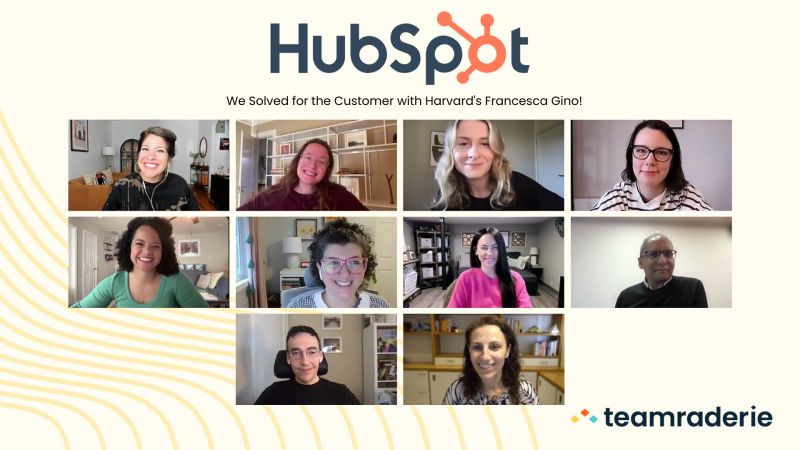DISRUPTIVE THINKING
Overcome complacency with non-linear ideation.
Success can lead to complacency.
“More often than not, great accomplishments cause individuals and organizations to become comfortable with their way of doing things.”
— Harvard Business School Professor John Kotter
In a survey of approximately 2,000 employees, more than half said they don’t question existing processes.
Negativity is often a symptom of complacency.
One of the top reasons people don’t share ideas is they’re afraid the idea will be rejected or ridiculed.
“But that won’t work.”
“To be successful and evolve, organizations need to strike a balance between adherence to the formal and informal rules that provide the necessary structure and the freedom that helps employees do their best work.”
— Teamraderie host and Harvard Business School Professor Francesca Gino

Teams need to intentionally prevent stagnation before it takes hold.
Impost false constraints
During brainstorming sessions, consider how you’d approach a problem with a constraint such as money, time, or resources.
Deeper Dive: Friction in Business: How To Reduce Barriers to Progress
Think outside the box
Identify the “obvious solution” and consider alternatives. Sometimes the obvious choice isn’t the right one.
Deeper Dive: Why the Best Gift You Can Give Your Team Is…Curiosity?
Turn negativity into positive solutions
When your instinct is to say “But that won’t work,” follow it up with “But it would if…”
Deeper Dive: Mindset Shift
A Stanford professor gave her students an assignment: Make as much money as possible in two hours using only $5 and present your findings in front of the class.
- Modestly successful: Most groups used the $5 to buy a few items, reselling them for a profit.
- Successful: Some groups ignored the $5 and focused on making money within the allotted two hours through other means such as refilling bike tires and selling restaurant reservations.
- Extremely successful: The winning group ignored the $5 and two hours, realizing that the most valuable asset was the presentation. They offered the presentation time to companies hoping to recruit Stanford students, netting a significant return.
What can teams learn from this?
- Step 1: Avoid the Distraction: There will always be an “obvious” solution that is simple, clear, and entirely wrong.
- Step 2: Ask Foundational Questions: Ask and answer questions that expose and vet underlying assumptions and logic.
- Step 3: Select the High Leverage Approach: Slow down and evaluate the options on the table. Select the path most likely to generate the asymmetric, attractive risk-adjusted returns.
Deeper Dive: The $5 Challenge
How Teamraderie Helps
Continue to develop skills, challenge existing ways of thinking, and strive for improvement. Teamraderie provides research-backed experiences to combat complacency in the workplace.
Our expert hosts will join your team live to work alongside your team in an interactive, virtual experience to improve your team’s non-linear thinking and challenge you to think disruptively for positive momentum.
